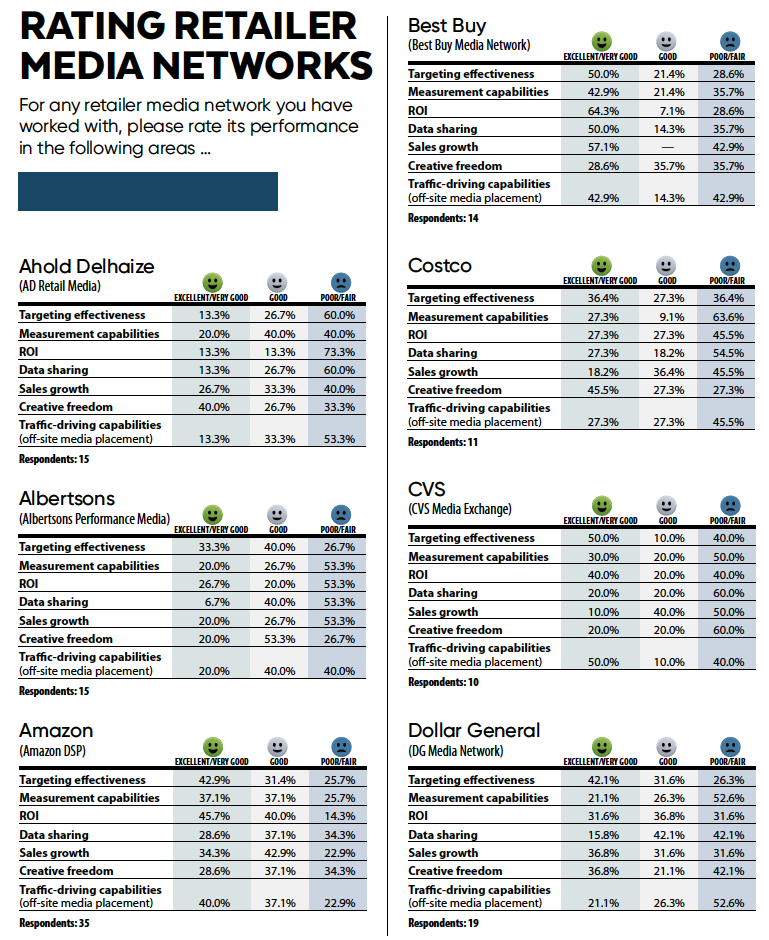Trends 2022: Retailer Media Networks: Ratings and Challenges
Responding to changing shopping behaviors and the incredible growth of e-commerce due to the ongoing COVID-19 pandemic, retailers in 2021 seemed to be either doubling down on their media network offerings or creating new networks altogether. As more marketers work with retailer media networks and retailers fully embrace their role as media companies, however, challenges are naturally coming to light.
“Each network varies in terms of capabilities, search methods, etc., which makes providing one set of [key performance indicators] difficult to establish,” said one survey respondent when asked what has been most challenging in working with retailer media networks (RMNs).

Some RMNs are standing out above others with regard to different performance metrics — at least for now while some retailers build out their networks. We asked respondents to rate the retailer media networks with which they work based on their relative strengths in targeting effectiveness, measurement capabilities, ROI, data sharing, sales growth, creative freedom and traffic-driving capabilities.
Not surprisingly, Walmart Connect, Target’s Roundel, Kroger’s Kroger Precision Marketing (KPM), Amazon DSP and Instacart were the networks our brand respondents worked with the most. Among these networks – and most other networks included in the survey – KPM led the way for its measurement capabilities and data sharing, with 62% of survey participants giving the network “excellent/very good” scores for these metrics. “Kroger and Amazon provide much better data without spend level commitments,” noted one respondent.
Instacart Ads also did well among these top-five networks for its ROI with a majority of survey participants giving the network an “excellent/very good” score for the metric.
Among other results:
- Walmart Connect has some work to do as far as creative freedom: a majority of survey participants who have worked with the network gave the platform a “poor/fair” score for creative freedom. Otherwise, the platform generally performed well in all other metrics.
- Amazon generally earned “excellent/very good” and “good” scores across all metrics.
- 71% of survey takers who worked with Sam’s Club Media Group gave the platform an “excellent/very good” for sales growth.
- 82% of participants who worked with Petco group gave the platform an “excellent/very good” for sales growth (although nearly three-quarters noted the network’s targeting effectiveness and sales growth needs to improve).
- Although the Chesapeake Media Group network is relatively new, a majority of respondents gave the platform an “excellent/very good” score for ROI.
The concept of these networks representing legitimate “media” opportunities has also continued to grow: nearly a third (30%) of respondents said network buys are being funded by national media budgets, up from 24% in last year’s Trends survey and 18.2% in 2020.
Skeptics remain, however, and continue to grow in numbers. About a third (33%) of survey takers said the networks are more a “money grab for the retailer” than an effective tool (an increase from 24% in last year’s survey). Moreover, 43% of respondents this year felt networks were “effective, but no more so than other digital media.”




